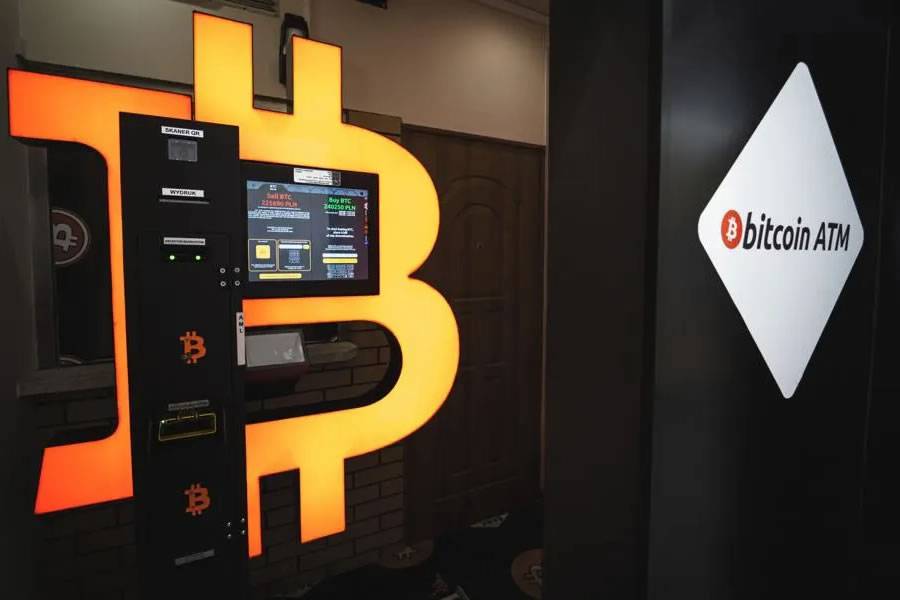The Future of Bitcoin ATMs: Trends and Developments
- 06-12-2023
- Business
- Canarian Weekly
Bitcoin ATMs, also known as BTMs, have emerged as a crucial gateway for cryptocurrency adoption and accessibility. In this article, we will explore the current state of Bitcoin ATMs, delve into the evolving technology behind them, examine their role in financial inclusion, address privacy concerns, discuss the competitive landscape, and predict future trends and developments.
The immediate innovault isn't a teacher but a connector. It effortlessly links individuals eager to understand investments with top-tier education providers.
The Current State of Bitcoin ATMs
Bitcoin ATMs have witnessed rapid growth and global distribution in recent years. As of 2022, there were over 34,000 Bitcoin ATMs spread across 74 countries, a testament to the increasing demand for cryptocurrency access.
· Global Distribution and Growth: Bitcoin ATMs are not limited to tech hubs; they can be found in diverse locations, from urban centers to remote areas. This widespread distribution underscores the democratizing impact of cryptocurrency.
· Operational Statistics: Bitcoin ATMs have processed millions of transactions, providing users with the ability to buy and sell cryptocurrencies with ease.
· Types of Bitcoin ATMs: Bitcoin ATMs can be categorized as one-way or two-way machines. One-way ATMs only allow users to buy cryptocurrencies, while two-way ATMs enable both buying and selling.
· Regulatory Landscape and Challenges: The regulatory environment for Bitcoin ATMs varies by country. While some nations have embraced them, others have imposed strict regulations, creating challenges for operators.
Evolving Technology Behind Bitcoin ATMs
Bitcoin ATMs have not remained static; they have evolved in terms of hardware and software to meet user demands.
Hardware Advancements:
· Enhanced Security Features: To combat fraud and enhance user trust, Bitcoin ATMs now come equipped with advanced security measures, including biometric authentication and tamper-resistant designs.
· Improved User Experience: User-friendly interfaces and intuitive designs make Bitcoin ATMs accessible to individuals with varying levels of cryptocurrency knowledge.
Software Developments:
· Integration of Additional Cryptocurrencies: Many Bitcoin ATMs now support a variety of cryptocurrencies beyond Bitcoin, expanding user options.
· Real-time Transaction Monitoring: Operators can remotely monitor Bitcoin ATM transactions in real-time, enhancing security and compliance.
· Connectivity and Remote Management: Bitcoin ATM operators can remotely update software, troubleshoot issues, and ensure regulatory compliance, reducing operational downtime.
The Role of Bitcoin ATMs in Financial Inclusion
Bitcoin ATMs play a pivotal role in promoting financial inclusion by providing access to cryptocurrencies for underserved populations.
· Bridging the Gap for the Unbanked: In regions with limited access to traditional banking services, Bitcoin ATMs offer a viable alternative, allowing the unbanked to participate in the digital economy.
· Access to Cryptocurrencies for Underserved Communities: Communities without easy access to cryptocurrency exchanges can rely on Bitcoin ATMs to buy, sell, and use cryptocurrencies.
· Case Studies of Successful Financial Inclusion Initiatives: Examples from countries like Venezuela and Nigeria demonstrate how Bitcoin ATMs have empowered individuals to navigate economic challenges.
Bitcoin ATMs and Privacy Concerns
The convenience of Bitcoin ATMs comes with privacy considerations and regulatory scrutiny.
· Anonymity vs. Regulatory Compliance: Bitcoin ATMs provide varying levels of anonymity, which has raised concerns about their use in illicit activities.
· The Debate Over KYC/AML Measures: Some jurisdictions require Know Your Customer (KYC) and Anti-Money Laundering (AML) procedures for Bitcoin ATM users, balancing privacy with regulatory requirements.
Competition and Market Consolidation
The Bitcoin ATM market has grown, attracting both established players and startups.
The Competitive Landscape
· Major Bitcoin ATM Operators: Companies like CoinFlip, CoinSource, and Bitstop have established themselves as industry leaders.
· Emerging Players and Startups: New entrants continuously innovate, introducing novel features and expanding the market.
· Market Consolidation and Mergers: As the industry matures, mergers and acquisitions are becoming more common, reshaping the competitive landscape.
· Impact on Consumer Choice and Pricing: Competition has driven improvements in user experience and fee structures, benefiting consumers.
Future Trends and Predictions
The future of Bitcoin ATMs holds several exciting possibilities and challenges.
· Integration with Traditional Banking: Collaborations between Bitcoin ATM operators and traditional banks may streamline cryptocurrency services.
· Expansion into Emerging Markets: Bitcoin ATMs can empower people in emerging markets to access cryptocurrencies and participate in the global economy.
· Adoption by Retail Businesses: Integration with retail businesses can provide convenient access to cryptocurrencies for everyday transactions.
· The Role of Bitcoin ATMs in a Cashless Society: As digital payments become increasingly prevalent, Bitcoin ATMs may serve as a bridge between the digital and physical worlds.
· Regulatory Evolution and Global Standardization: Regulatory frameworks will continue to evolve, and efforts to standardize Bitcoin ATM operations worldwide may increase.
Conclusion
Bitcoin ATMs have come a long way from their inception, evolving into a critical component of the cryptocurrency ecosystem. Their ability to provide accessibility, improve technology, promote financial inclusion, and address privacy concerns will play a pivotal role in shaping the future of cryptocurrency adoption and use.
Other articles that may interest you...
Trending
Most Read Articles
2.
Featured Videos
A Vision of Elvis Tenerife Promo
- 10-05-2025
TEAs 2025 Highlights
- 17-11-2025



























































